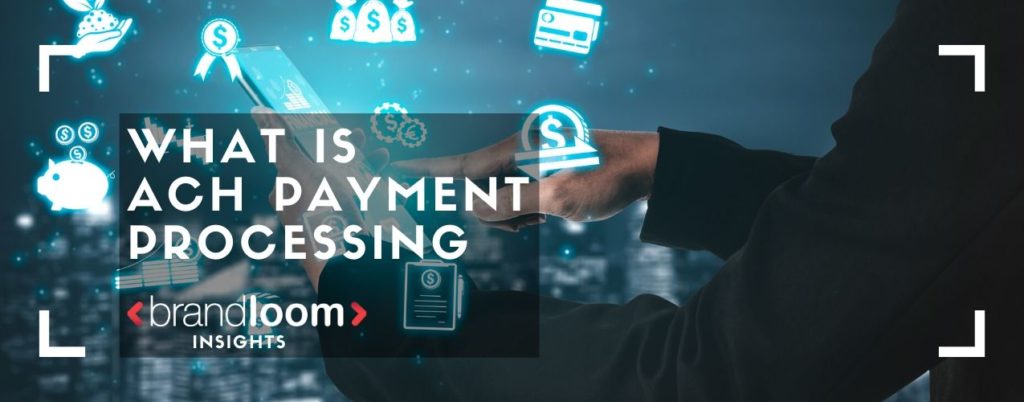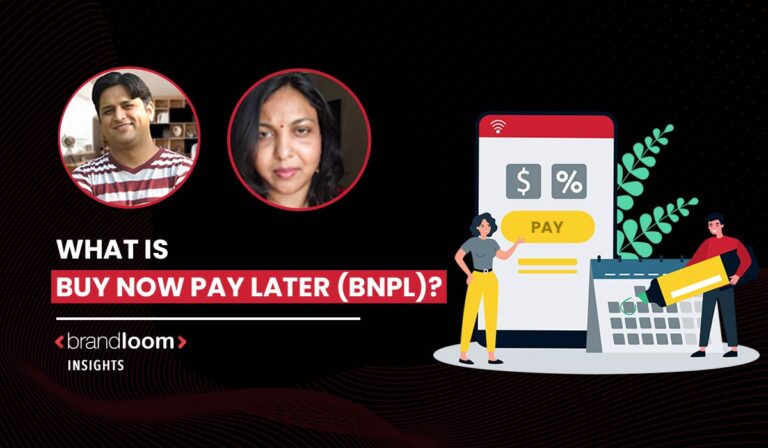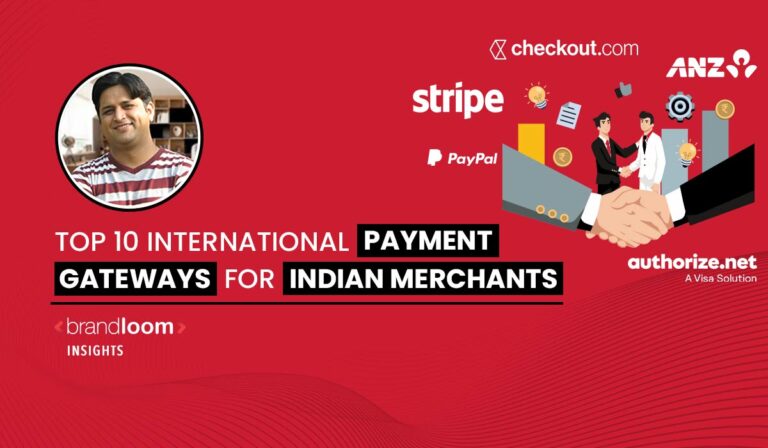When you wake up in the morning and see that the salary was deposited automatically to your bank account, that’s an ACH payment. ACH is an electronic fund transfer system that enables credit transfers and direct debits. If you want to know more about this process, read on.
It is estimated that more than 23 billion electronic payments were made via the ACH mode of payment in 2018. In fact, ACH is regarded as one of the largest and safest methods of money transfer across the globe.
When you pay a bill payment online and save the hassle of writing and mailing a check or setting your mortgage and various other recurring payments to send on the day of the month, you select automatically, that’s also known as the ACH payment method.
ACH in bank statement is an electronic fund transfer system that enables payments in the United States.
If you want to know more about this process, read on.
What is ACH
ACH is basically a network that makes electronic payments possible in the USA. Earlier, financial institutions used to take a lot of time sorting and processing paper cheques, and despite their best efforts, employees simply could not keep up with the massive volume of checks. Hence, out of necessity, banks that were part of the American Bankers Association put their heads together to find a more efficient way to make transactions possible and keep track of them.
In 1974, the NACHA (National Automated Clearing House Association) was born in the United States. The technology gradually grew more sophisticated from floppy disks and magnetic tapes, and the network spread to encompass the entire USA. In 1994, the Federal Reserve mandated that all payments between banks be made electronically.
Now, it is the default system of electronic payments, especially for low-value domestic transactions. It is becoming increasingly popular for (peer-to-peer) payments.
What is ACH Payment Processing
ACH, full form in the bank statement is an automated clearing house, which is one of the electronic networks for financial transactions, mainly domestic low-value payments.
The ACH transfer is one way to move money between accounts at different banks electronically. It helps you to send or receive money conveniently as well as securely.
ACH full form in banking: Automated Clearing House
You might be using ACH transfers without even realizing it; if you have paid via direct deposit, then that’s also the form of ACH transfer.
An ACH is a computer-based clearing house as well as a settlement facility that is established to process the exchange of electronic payments between participating financial institutions.
Most of the ACH payments support the following types:
- ACH Credit payment: This includes the non-immediate transfer of funds between the accounts at different financial institutions for payments by retail customers and non-urgent business-to-business payments.
- ACH Direct debit payments: consumer bills like utilities, ACH Loan payment, insurance premiums, mortgages, and also other regular payments.
The ACH transactions are not the same as debit card payments, eChecks, or wire transfers. It is vital to understand that not all electronic payments are ACH payments. For example, debit and credit card payments are electronic, but this does not mean that they are ACH transactions. ACH is only specific to bank account transfers.
ACH Payment Processing Meaning in Banking
In order to understand what type of payments ACH supports, we must first understand how it operates. ACH facilitates direct bank-to-bank payments. In other words, it uses the customer’s bank account and login information to access their funds. Then the funds are accordingly linked to debit or credit accounts to facilitate the necessary transaction.
How Does the Best ACH Payment Processing Work
Automated clearing house payments are one of the electronic payments made with the ACH network’s help. Funds move from one bank account to another with the help of an intermediary which routes funds to the final destination.
The types of transfers include external funds transfers, bill payments, person-to-person payments, direct deposits from employers, and government benefit programs, while it also comprises business-to-business payments.
ACH payments are electronic payments created when the customer provides permission to an originating institution, corporation, or other originator.
Customers who select ACH payment must first sanction you to debit their bank account for the amount due. To comply with ACH operating rules, you must either sign and write or electronically display the authorization.
Therefore, an ACH operator helps to give information to the network participants within the settlement network. The recent rule changes have made it possible to clear most ACH debit and credit transactions on the same business day.
- This involves several parties: The originator- the party initiating the transaction. For example, you are the originator when you try to send ACH Payments to your friend.
- The originator’s partner bank. Also known as the Originating Depository Financial Institution (ODFI). In this case, it is the bank where you have an account from which you will pay.
- An ACH operator receives the payment from the ODFI. This may be the Federal Reserve in the USA.
- The receiver’s partner institution. This is the bank or institution that processes the transaction on behalf of the recipient. Also called the Receiving Depository Financial Institution (RDFI).
- The recipient: The money you sent will be credited to the bank account of this person.
Types of ACH transfers
Most of the ACH payments support the following types:
- Credit transfer: includes the non-immediate transfer of funds between accounts at different financial institutions. For example, ACH payment with credit card made by retail customers and non-urgent business-to-business payments. It helps you push money online to accounts at different banks, either your own or friends’ or family members’ accounts.
- Direct debit payment ACH: These include consumer bills like utilities, loans, insurance premiums, mortgages, and also other regular payments. The company you are paying can withdraw what is owed from your account each month when you set up a recurring bill payment.
Therefore, in ACH payment, a consumer pays their service providers, such as cable and gas companies, either manually or with the help of recurring payments.
The ACH Network is at the center of commerce in the U.S., which helps to move money and information from one bank to another using Direct Deposit and Direct Payment.
ACH Network transactions transfer important transaction information electronically, resulting in faster processing times and cost savings compared to using paper checks.
What ACH Payment is not
The ACH transactions are not the same as debit card payments, eChecks, or wire transfers. It is vital to understand that not all electronic payments are ACH payments. For example, debit and credit card payments are electronic, but this does not mean that they are ACH transactions. ACH is only specific to bank account transfers.
Therefore, in ACH web payment, a consumer pays their service providers, such as cable and gas companies, either manually or with the help of recurring payments.
The ACH Network is at the center of commerce in the U.S., which helps to move money and information from one bank to another using Direct Deposit and Direct Payment.
ACH Network transactions transfer important transaction information electronically, resulting in faster processing times and cost savings compared to using paper for checks.
What is ACH Mandate?
Customers grant permission to originating institutions, corporations or other originators to transfer funds to or from their accounts, enabling ACH payments.
Customers who select ACH payment must first sanction their partner bank or the relevant institution to debit their bank account for the amount due. To comply with the ACH operating rules, you must sign and write or electronically display the authorization.
Therefore, an ACH operator helps to give information to the network participants within the settlement network. ACH can now clear most debit and credit transactions on the same business day.
Benefits of ACH Payments
Simple to handle
When customers pay by check, businesses often need to wait for the mail to arrive, and then they need to deposit the check with a bank. Occasionally, payments go missing, and manually inputting them into a recordkeeping system requires a lot of effort.
It is no longer necessary to transmit checks to the bank and wait a few days to see which checks bounced since electronic payments come swiftly and reliably.
Less expensive than plastic
Businesses that receive payments by credit card often cost less to process an ACH transfer than it costs to take a credit card payment. ACH will not provide you with a real-time approve or deny response like a credit card terminal would do.
Long-distance payments
Businesses can accept payments by ACH remotely, and the same is true with credit cards also. Moreover, ACH can provide a solution when your customers do not have credit cards or when they prefer not to give their card information regularly.
What does ACH payment mean in India
In India, people generally refer to ACH as an “Electronic Clearing Service” or ECS. As the RBI puts it, “Electronic Clearing System (ECS), both for Credit and Debit operations, functions from 46 places (15 managed by Reserve Bank and the rest by the State Bank of India and one by State Bank of Indore). The ECS is the Indian version of the Automated Clearing Houses (ACH) for catering to bulk payments.”
Different banks levy different charges for different types of accounts. They frequently update the charges and rules. In most cases, banks charge a fixed amount for the first time you make an ECS payment as an ACH payment fee for activating the facility, along with GST.
If you have an account in any bank in India, talk to your branch to stay updated on the issue.
Reasons why consumers like to make payments with ACH
Businesses are not the only ones who benefit from ACH payments.
Easy payments
Consumers do not need to write checks and reorder checks when they run out and get checks in the mail on time. No charges go onto their credit cards because the funds come straight from their bank account.
Autopilot
If the customers are using automatic ACH payments, they do not need to take any action when payments are due. Everything runs on autopilot, for better or worse.
Benefits of shifting to ACH Payment Processing
Suppose you are a business owner or entrepreneur and want to maximize profit as well as minimize expenses. In that case, your business’s custom ACH processing solution is perfect. ACH payments are one of the excellent ways to:
- It helps to reduce costs mainly when compared to check as well as edit card processing.
- It also helps to increase the payment speed, flexibility, and convenience.
- ACH payment with credit card also helps you to add payment options for your customers.
- It helps in collecting payments in a highly secure manner.
Remember, many customers are also partial to ACH. They may not want to give out their credit card information or may not have credit cards. Moreover, ACH is also very convenient because consumers do not need to write checks. Customers who use automatic ACH payments do not need to keep an eye out for bills. Everything runs on autopilot, for better or worse.
Adapting the Right Payment Option for Your Online Business
It is always better to have multiple options for your customers if you have an eCommerce or online business. Remember, customers love convenience. ACH is a very convenient payment option for them, so you must consider making it available for them. The easier you make it for them to shop with you, the more they will come back.
So, make the right choice for your business and your customers.
Frequently Asked Questions
Ans. There are two distinct ways to electronically move money from one bank account to another: ACH (Automated Clearing House) payments and wire transfers. The three key distinctions between the two are speed, cost, and processing methods. While ACH payments may take a few days to execute, wire transfers are instantaneous and may be completed in a matter of minutes.
ACH payments are less costly than wire transfers since both the sender and the recipient must pay costs. On the other side, ACH payments are free or very inexpensive per transaction. Banks start and complete wire transfers, while a clearinghouse automatically completes ACH payments.
Furthermore, ACH payments are safer than wire transfers since they are subject to additional laws, restrictions, and inspection. Unlike wire transfers, ACH transactions allow for reversals in case of a mistake or fraudulent activity.
Ans. The main use of ACH (Automated Clearing House) in the United States is for domestic payments. Although a small number of banking institutions may provide international ACH transfers, they might not be the most practical choice for cross-border payments.
Wire transfer is the most common technique for sending and receiving money internationally. Compared to ACH payments, wire transfers are quicker and more secure, and they allow you to send money in other currencies.
Though generally speaking, wire transfers are more costly than ACH transactions. It is a good idea to speak with your bank or financial institution before transferring money abroad to learn about the alternatives and potential costs.
Ans. Yes, it is possible to halt an ACH payment in certain cases. If you are the sender, you may contact the biller or the business’s bank by phone or letter to ask them to halt the automatic transfer of funds.
Additionally, you must let your bank or credit union know if you want to pause payments. If you are the receiver, you cannot halt the payment on your own, but you may dispute it by contacting your bank or credit union. Specific laws and restrictions apply to ACH reversals, which may not always allow for halting or reversing payments.
Ans. In certain cases, you can cancel a future ACH payment. If you are making the payment, you may ask your bank or credit union to halt it. Remember that you cannot stop all pending ACH payments.
If the payment has already been completed, it cannot be reversed. Furthermore, if the receiver gave their approval to the payment, it may not be feasible to have it reversed. If you need to stop a pending ACH payment, you must move swiftly since there is sometimes very little time to do so.
Ans. You will need the following details to make an ACH (Automated Clearing House) payment:
The account holder’s name
The recipient’s bank’s routing number
The recipient’s bank account’s account number
Account type (checking or savings)
In rare circumstances, your bank could also ask for the account holder’s name and the financial institution where the beneficiary has an account to authenticate the transaction.
Make sure you have precise and current information before initiating an ACH payment to prevent transaction failure or delay due to incomplete or inaccurate information.
Ans. In order to set up Quickbook ACH Payment, you must do the following:
Go to the “Customers” tab and choose “Credit Card Processing.”
To begin, choose “Set Up ACH Bank Transfer.”
Follow the on-screen instructions to validate your account and input your bank account details.
After validating your account, your clients may begin sending ACH payments to you.
In order to handle an ACH payment, go to the “Customers” menu and choose “Create Invoices.”
Enter the payment amount and the customer’s details.
Choose “ACH Bank Transfer” as your preferred payment option.
Type in the customer’s bank account details and choose “Save.”
QuickBooks will deposit the payment into your bank account after processing it.
It’s crucial to remember that processing ACH payments could include costs, so be sure to ask your bank or payment processor for further details.







